VR as a learning tool yields surprising benefits

It looks strange, almost science fiction-like and not immediately attractive. When you see a photo of someone wearing VR glasses, it is difficult to imagine what serious added value virtual reality can provide. It is often mistakenly still believed that VR is primarily intended for gaming and entertainment purposes. It looks like an expensive futuristic technique, which especially nerdy types in Silicon Valley will become very enthusiastic about, and it often remains too-far-away for mere mortals in professional organizations. And that’s a shame, because it is certainly worth looking beyond the objections. As a learning tool, VR can provide considerable business benefits and there is potentially a lot to be gained from it. And not just financially. For example in the field of customer and employee journeys or in educating and training employees, in both hard and soft skills.
In practice, we see that people can often only be convinced if they experience virtual reality themselves by putting on a VR headset. And the latter is a barrier in itself. With such glasses you are cut off from the world around you and that feels unnatural.
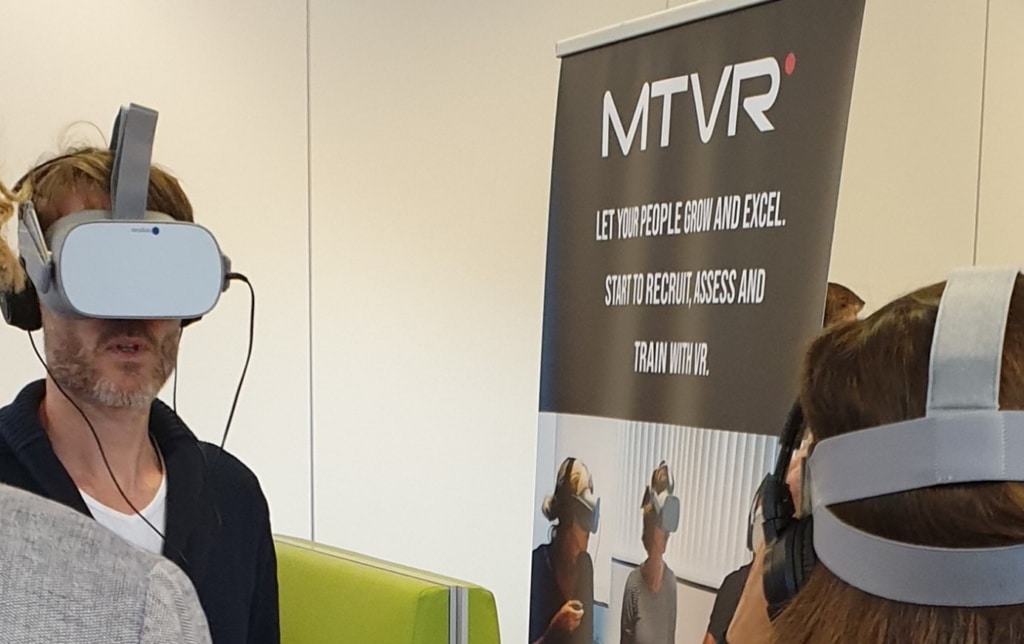
Sometimes people even find it a bit scary for that reason. As if asking them to enter an unfamiliar room and then slam the door behind them. It is not my intention to scare people off, on the contrary, but in itself this is a good comparison with what is happening. In VR you will be moved to a different location and fully immersed in the situation shown in a 360 ° video or computer animated environment. The strength of this medium is that your brain goes along with it very quickly and almost immediately assumes the circumstances as true, so that you will react to them in the same way as in the real world.
In 360° VR you are placed in a lifelike, simulated reality and you experience the sensation of feeling physically present in a scene. Without distraction and therefore completely focused. This evokes real emotions and you will react in a natural way to what is going on around you.
Evoking emotions
The effect of VR is perhaps the easiest to imagine and to explain on the basis of an example where you are moved to a place at a very high altitude. Most of us recognize the feeling of fear of heights to a greater or lesser extent. Imagine: you close your eyes and when you open them again a little later you find yourself hanging more than two hundred meters above the ground, in a harness via cables, from a media broadcasting mast. It is not difficult to imagine what emotions you will feel right now if you are not used to this height.
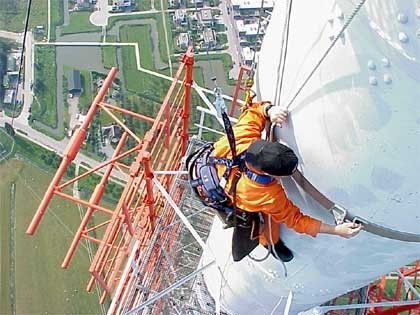
You are, safely secured, placed in the position of a mechanic who has to carry out maintenance work! Your hands probably automatically want to look for something to hold onto. A few meters below you you see a colleague at work. Looking away is not possible and looking for a distraction by taking a sip of your coffee or looking at your phone is not an option either. During this experience you are then expected to correctly go through the entire procedure with actions to successfully replace a certain antenna
With this example we see that VR not only moves you emotionally to another location, but can also put you in the shoes of someone else. Compared to viewing photos or a video of the same situation, it evokes much stronger, direct emotions and physical reactions. You experience the stress feeling of fear of heights: sweaty hands, looking for a grip and an indefinable feeling in your stomach. In addition, this example shows a number of other typical advantages of VR:
it is a safe way to practice a physically dangerous situation. Of course, every mechanic will experience a real first time and practice the actions at a lower height, but this way you can get used to the circumstances and prepare.
the situation can be practiced without restriction.
the training can be done anywhere, even at home on the couch. You do not have to go to a broadcasting mast with all the logistical planning, travel times and possible disruption of daily activities.
by adding interactive elements, choices or dilemmas can be presented, for example which steps you should take in certain procedures. The choices made are then stored in an LMS.
as part of an assessment, such a scene could tell something about, for example, a candidate’s stress resistance.
Colleagues, for example managers, can also experience in a safe way what tough conditions a mechanic has to work in.
These and other benefits apply to many areas within L&D. Countless learning situations can be devised, in which it is highly desirable that trainees can be placed in very realistic circumstances. So that one can practice safely without stress, before encountering these situations in hard daily working practice. Unfortunately, it is often not feasible from a time and cost perspective to organize these, sometimes complex simulations in real life. Due to travel times, staff are away from the workplace for too long and employees usually cannot leave the workplace with too many at the same time. Or arranging trainers, locations, required machines and vehicles on location can be downright disastrous.
DIGITAL ROLEPLAY
How do you deal with a very dissatisfied and tenacious customer who demands his money back, while a queue of impatient customers who want to checkout keeps growing? In the case of regularly deploying role plays, for example when training soft skills, hiring role-play actors several times is very expensive. For that reason, often only one or two actors are hired, which makes group processes difficult to simulate. Moreover, not everyone always feels comfortable being an active part of a role-play with a sense of security, with colleagues watching attentively. The question then is whether the trainee’s concentration at such a moment lies on the content and not on the environment. These drawbacks are overcome by turning role-playing games into digital VR scenarios.
USE CASES
Although the use of VR has not really gained momentum so far, more and more serious and interesting use cases are emerging. Some examples from leading organizations, taking a pioneering role showing VR has passed the experimentation phase and is maturing:
After cabin crews were previously trained in VR, KLM now also trains Embraer pilots in VR simulations: “Virtual Reality (VR) makes training more accessible. It is on-demand and site-independent – pilots don’t have to be in a classroom or a simulator at a certain time. What’s more, it invites them to explore, something they can do safely in a virtual environment. VR allows pilots to familiarise themselves with the cockpit in advance, so that they make more effective use of their simulator time.” – Sebastian Gerkens, Senior Instructor Embraer at KLM Cityhopper (Source: KLM news)
The Police Academy has been strongly committed to VR for some time now. For example, the updated Police Basic Training PO21, which was started in February, contains various VR simulations in addition to other forms of blended learning, which will undoubtedly be expanded further in the coming years.
Several fire service agencies in The Netherlands use VR to ensure that their people become and remain competent. Situations where life-saving actions must be practiced and alarm procedures can be executed in 360° video. Operational choices must be made through the whole process. The VR tool from WARP is used for this, in which scenarios can be developed, all content is placed and the analytics are exported.
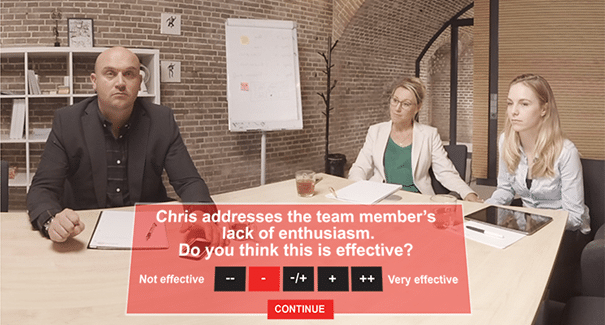
VanderMaesen|Koch, eelloo and Slim Assessments have jointly developed VR assessment, in which you participate as an observer in a team meeting. VR assessment is about individual behavior and group processes, you assess the behavior by answering questions. Those answers are scored and processed into a report with standardized results. VR assessment is also used as a coaching and training tool.
VR is already widely used in healthcare, for example in patient therapies, training of healthcare workers, de-stressing patients or even staff, such as at the OLVG hospital in Amsterdam.
Consider also practicing daily situations in retail in the field of customer contact (customer friendliness, cross and upselling, dissatisfied customers). Or how to act during an armed robbery? In VR you experience and feel what it is like to be threatened with a lot of verbal abuse and to look into the barrel of a gun.
But also for a much broader deployment in HRM learning & development at corporate or government organizations: how to deal with undesirable behavior or integrity dilemmas (see 360Integrity training courses for this) inclusion, effective meetings, development of leadership skills, bad news conversations, onboarding programs, assessments and so on.
QUALITY CONTENT
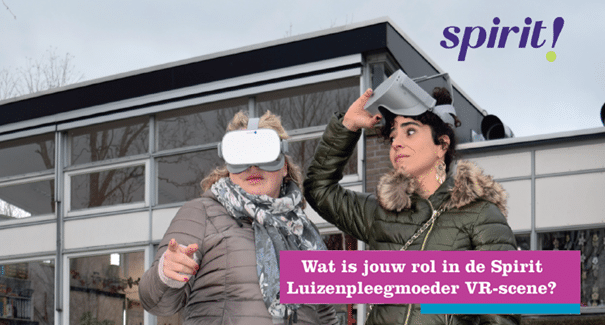
A good quality of the content is a prerequisite for fully immersing your brain and making you believe that you are part of the realistic situation shown. Evoking vicarious shame by wooden acting, for example, and poorly written dialogues distract and with that a VR training misses its goal. The power of VR lies in the lifelike simulation you create, poor execution directly detracts from that.
Make sure you have a well thought-out proof of concept first
VR is still often seen as an innovation experiment in many organizations. Of course it is advisable to start with a modest proof of concept, but do not do that without clearly defining the learning objectives and the results you want to achieve. When is a project successful, especially if you compare it to the methods used so far? Consider carefully in advance what the rollout of the project will look like to prevent the product from disappearing unused in the cupboard. And think about where good results should lead by developing a clear long-term vision. If the VR project is purely an experiment to show the outside world that the company is engaged in innovation, there is a danger that a working group will set to work somewhere in the organization that will pay a little for (too) little money. produces an impressive VR experience. As a result, the experiment failed, disappears in the trash and there will be no follow-up. One of the goals of a proof of concept, especially in larger organizations, is to get the various stakeholders to think along and get them aligned. Divide the project into different phases in which all stakeholders have the opportunity to become co-owner. See VR as a fully-fledged resource, despite the fact that it is a new, still unknown resource, and dare to invest in quality in the form of time and good people. Hire an external VR specialist to guide the process.
TECHNOLOGICAL DEVELOPMENTS
The technological developments in the field of Virtual Reality are fast. With the arrival of the Oculus Quest 2, the Pico G2 and the Pico Neo 2 glasses, great strides have been made in quality and possibilities such as built-in eye tracking and user-friendliness of stand-alone glasses. VR headsets are available from a few hundred euros. There has been great excitement recently about the development of Apple VR glasses, which are likely to be released in 2022. Because yes, if even Apple comes with a headset, the world will look at VR with different eyes.
Another 12 advantages of VR learning
Highly scalable: many more employees can undergo the same training regardless of location, also via their own telephone. So the training is not limited to managers or a limited selection of employees. By offering modules, differences can be made in the content offered per trainee.
Repeatable: the possibility to go through a training several times and the chance to improve yourself.
No distraction from people around you, emails or texts that come in, so 100% focus on the content.
The more people are trained, the greater the cost reduction. Especially for companies with many employees to train and a high staff turnover, the savings will be large compared to classroom or individual teaching.
Possible actors only need to be hired once, making it feasible to simulate situations in a group context with multiple actors.
Extensive analytics options: choices, answers and other interactions are measured and can be delivered in the form of reports. You can see who, when, has completed a training and whether this has been done several times and whether there is improvement in the results.
Do not look at a screen with the danger of distraction, loss of concentration, click answers without inspiration, but actively undergo, experience and do.
Simulations that are difficult to simulate in real life training situations due to location (for example a construction site, a transmission tower or a busy shop), the amount of required machines, vehicles and / or actors only need to be staged once and can then be used for years.
Safe, both practical and social.
Learning faster and better: by doing and more emotional connection with the material you will remember up to 40% better in less time and also give you more confidence about what you have learned.
Operational time savings: training itself takes less time to complete. Employees do not necessarily have to go to a remote location and can do training when it suits them, which all means less loss of workable hours.
The circumstances and starting points are exactly the same for everyone and therefore not multi-interpretable.
RECOMMENDED
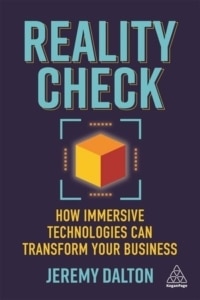
I can highly recommend the recently published book by Jeremy Dalton, head of XR division at PwC UK. “Reality Check. How immersive technologies can transform your business”. The book is intended for anyone who is interested in the possibilities that this technology offers, is considering using it, but knows too little about it. Jeremy shares his knowledge and enthusiasm about VR, AR and MR in clear, understandable language.
The VR Advantage: How virtual reality is redefining soft skills training
PwC
Interesting are the research results and figures, which can be read in the highlights from a comprehensive report from PWC from 2020: The VR Advantage: How virtual reality is redefining soft skills training
FINALLY
VR is not a complete replacement for existing, proven resources. Training people on site with real human interaction will always be necessary and in many cases better. People also learn by looking at each other, for example in a role-play situation. Just like going through an e-learning or watching an instruction video can in many cases be more efficient, better and cheaper. A solution will often lie in a combination of classroom (or since COVID of course also online) lessons with VR scenarios, such as with 360Integrity. Always ask yourself why you want to choose VR and only do so if it will provide clear added value compared to other methods. And if you seriously delve into the possibilities and effects of VR, you will see that this will be the case surprisingly soon!
Would you like to know more about VR or do you need advice, please contact us.
